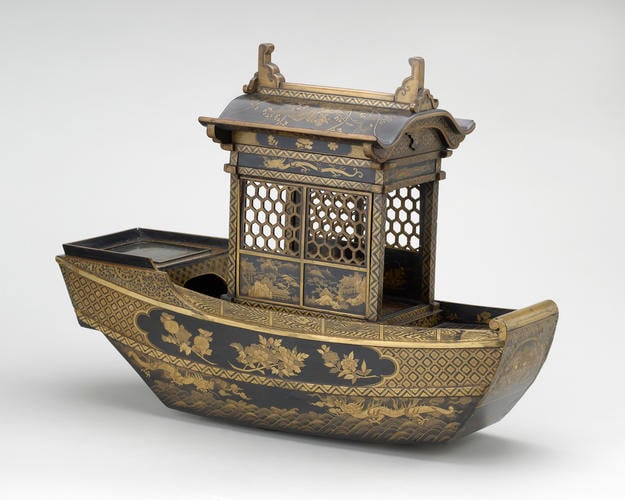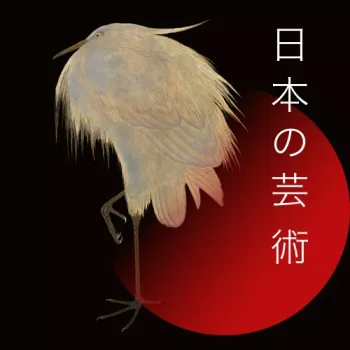Model of a junk second half of eighteenth century
Black and gold lacquer on wood | 38.5 x 52.5 x 14.0 cm (whole object) | RCIN 26011
-
Like many wares destined for the European market, this table caster combines Chinese and Japanese elements. The form is of a Chinese junk. Such vessels were a romantic symbol of East Asia for orientalists in eighteenth-century Europe. By the end of that century, Chinese craftsmen at Canton (Guangzhou) were producing ivory junks with clockwork mechanisms as souvenirs for Europeans based there. Other models arrived in Britain via EIC ships. George IV purchased both ivory and lacquer pieces of this form. His great-uncle, William, Duke of Cumberland (1721–65), had a Chinese-inspired vessel constructed for him, which he moored on Virginia Water, at the southern extremity of Windsor Great Park.
This model functions as a table caster, for the attractive display of condiments at meals. It is decorated around the sides with gold takamakie (lacquer in high relief) sprays of peonies, chrysanthemums and camellias. The lower sides of the boat bear a design of two dragons confronting one another over the sea, and the careful placement of the waves suggests that the junk is in the water. With square prow cut back below to the sides, these being reinforced by a long, curving, flat rib; the square stern topped by a scroll and curving to the flat base. The projecting stern with a rectangular platform in black, with ribbed rim apparently to hold a tray, and the deck, painted with wood-grain pattern, with low rails on either side. In the centre, a four-pillared deckhouse, with double-curved roof with a ridge peaked at either end, the side walls having latticed windows, with a long dragon panel above and two painted landscape panels below. On the prow end, a crane roundel, and on the stern, a monster mask with eyes in shining gold leaf. On the flat underside, slots for an axle and two protruding wheels, one of wood and the other a Western metal cogwheel replacement; also a slotted strut for attaching a cord.
When the table caster was displayed at the Royal Pavilion, Brighton, in 1829 it was described as having ‘clock work’. On the flat underside are slots for an axle and two protruding wheels – one of wood, and the other a western metal replacement. The junk was one of a pair, and the two were displayed together in the Lacquer Room at Buckingham Palace in 1930; the second no longer survives.
Text adapted from Chinese and Japanese Works of Art in the Collection of Her Majesty The Queen: Volume III and Japan: Courts and Culture (2020)
Provenance
Probably acquired by George IV. One of two formerly at the Royal Pavilion, Brighton, and in June 1848 sent to Kensington Palace: 'Two large black and gold Japan boats with sliding doors & clock work, landscape and flowers' (1829A, p. 54). Visible in a photograph of the Lacquer Room at Buckingham Palace in 1930 (H. Clifford Smith, Buckingham Palace: its furniture, decoration and history, pl.319).
-
Creator(s)
(nationality)Acquirer(s)
-
Medium and techniques
Black and gold lacquer on wood
Measurements
38.5 x 52.5 x 14.0 cm (whole object)
Category
Place of Production
Japan









